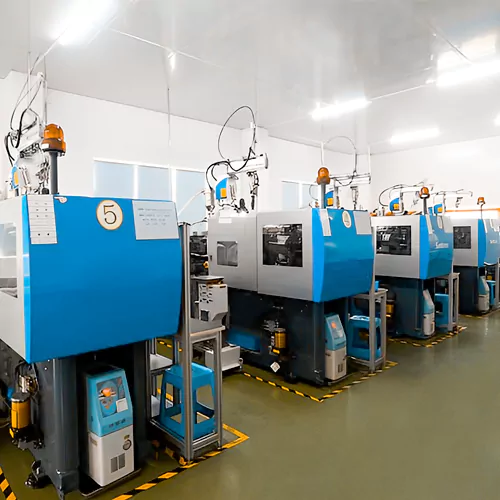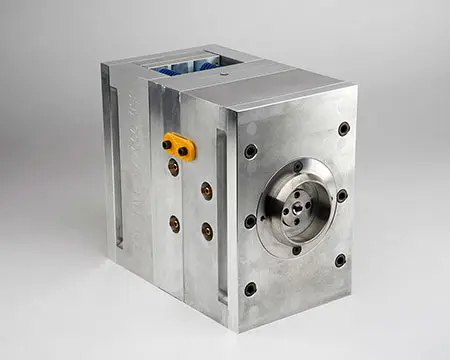Plastic Injection Molding: A Comprehensive Overview to Modern Production Techniques
Recognizing the Fundamentals of Plastic Shot Molding Processes
Plastic shot molding serves as a keystone of modern manufacturing, providing a systematic technique to creating complex elements with precision. Discovering these essential components might reveal how even minor changes can lead to substantial renovations in manufacturing results, increasing concerns about the potential for innovation in this recognized procedure.
What Is Plastic Shot Molding?
Plastic injection molding is an extensively used manufacturing procedure that changes thermosetting and thermoplastic products right into accurate and complex shapes. This method is favored for its ability to generate high quantities of similar parts with extraordinary precision, making it a crucial technique in different markets, consisting of auto, durable goods, and medical gadgets.
The procedure involves melting the picked plastic product and injecting it into a mold and mildew under high pressure. The mold and mildew, developed to the requirements of the desired part, enables the molten plastic to materialize as it cools down and solidifies. When the product has actually hardened, the mold is opened, and the ended up component is ejected.
Plastic shot molding uses several advantages, including minimized waste, uniformity in manufacturing, and the capability to incorporate elaborate styles that might be testing with other making approaches. In addition, it supports a wide series of materials, each providing distinct properties that can be tailored for specific applications. As industries continue to introduce, plastic shot molding continues to be at the center, enabling the growth of innovative items that fulfill progressing customer demands.
The Injection Molding Process
The injection molding procedure is an innovative strategy that entails a number of crucial phases to create premium plastic elements. At first, plastic pellets are fed into a warmed barrel where they are thawed into a viscous fluid. This molten plastic is then injected under high stress into a precision-engineered mold and mildew, which shapes the material right into the preferred type.
Once the mold and mildew is filled up, the plastic is allowed to solidify and cool down, taking the form of the mold tooth cavity. Cooling time is crucial, as it influences the cycle time and the last residential properties of the molded component. After adequate air conditioning, the mold opens up, and the completed component is expelled using ejector pins.

Materials Utilized in Shot Molding
Various materials can be used in the shot molding procedure, each offering special residential or commercial properties that deal with certain applications. One of the most generally utilized materials include thermoplastics, thermosetting plastics, and elastomers.

Thermosetting plastics, like epoxy and phenolic materials, undergo a chemical adjustment during the healing process, leading to a stiff, stringent structure. These materials are ideal for applications calling for high heat resistance and architectural stability, frequently used in vehicle components and electrical insulators.
Elastomers, consisting of silicone and rubber-based materials, offer versatility and resilience. Their special buildings make them appropriate for applications that require elasticity, such as gaskets and seals.
In addition, specialized materials like bio-based plastics and compounds are acquiring traction for their environmental advantages and enhanced efficiency qualities, widening the range of injection molding applications in numerous sectors. Understanding the residential properties of these products is critical for choosing the ideal kind for certain jobs.
Advantages of Injection Molding
Shot molding attracts attention as a very effective manufacturing procedure that supplies numerous advantages for producing complex components with precision. One of one of the most significant benefits is the capacity to develop detailed styles that would certainly be difficult or tough to accomplish with other techniques (Plastic Injection Molding). The process permits limited resistances and thorough functions, making sure top notch elements
Furthermore, shot molding is recognized for its fast production abilities, making it a perfect selection for high-volume manufacturing. Once the mold and mildew is produced, components can be produced quickly, reducing lead times and increasing overall productivity. This performance not just reduces manufacturing costs Recommended Site yet likewise offers an affordable edge in the marketplace.
The flexibility of products used in injection molding even more improves its allure. A large range of thermoplastics and thermosetting polymers can be employed, permitting manufacturers to pick products that ideal fulfill their certain requirements, including flexibility, stamina, and warm resistance.
In addition, the process lessens waste, as excess material can frequently be recycled and recycled. This sustainability facet contributes to a minimized environmental effect, making shot molding an accountable manufacturing choice. Generally, the advantages of shot molding make it a favored technique for numerous sectors.
Variables Influencing Product High Quality
While many elements can affect product quality in shot molding, recognizing these components is important for achieving optimal outcomes. Trick facets include product choice, refining parameters, and mold style.
Material selection plays a vital function, as various polymers display unique residential properties that impact flowability, toughness, and thermal security. Inadequate product choice can lead to defects such as bending or incomplete filling.
Handling parameters, consisting of temperature, pressure, and cycle time, should be diligently controlled. Variants in these setups can cause inconsistencies in component dimensions and surface coating. For circumstances, excessively heats might cause degradation of the polymer, while poor pressure can cause brief shots.
Mold design is equally essential, as it figures out the circulation of the molten plastic and the cooling process. Poorly designed mold and mildews may result in uneven air conditioning rates, causing residual tensions and dimensional inaccuracies.

Verdict
In conclusion, plastic shot molding serves as a crucial manufacturing procedure that makes it possible for the efficient manufacturing of top notch components. Proficiency of the shot molding process, consisting of the understanding of materials and the impact of numerous aspects on item high quality, is essential for accomplishing optimal results. The advantages of this approach, such as cost-effectiveness and layout adaptability, more highlight its value throughout multiple sectors, strengthening its condition as a recommended choice for high-volume production.
Plastic injection molding serves as a keystone of contemporary manufacturing, giving a systematic technique to generating intricate elements with accuracy.Plastic shot molding uses numerous benefits, consisting of reduced waste, uniformity in production, and the capacity to integrate elaborate styles that may a knockout post be challenging with various other manufacturing methods (Plastic Injection Molding). As sectors proceed to innovate, plastic shot molding continues to be at the leading edge, allowing the growth of innovative products that satisfy advancing consumer needs
The shot molding procedure is a sophisticated technique that entails a number of vital phases to produce high-grade plastic elements.In final thought, plastic injection molding offers as a vital production process that allows the reliable click for more production of high-quality parts.